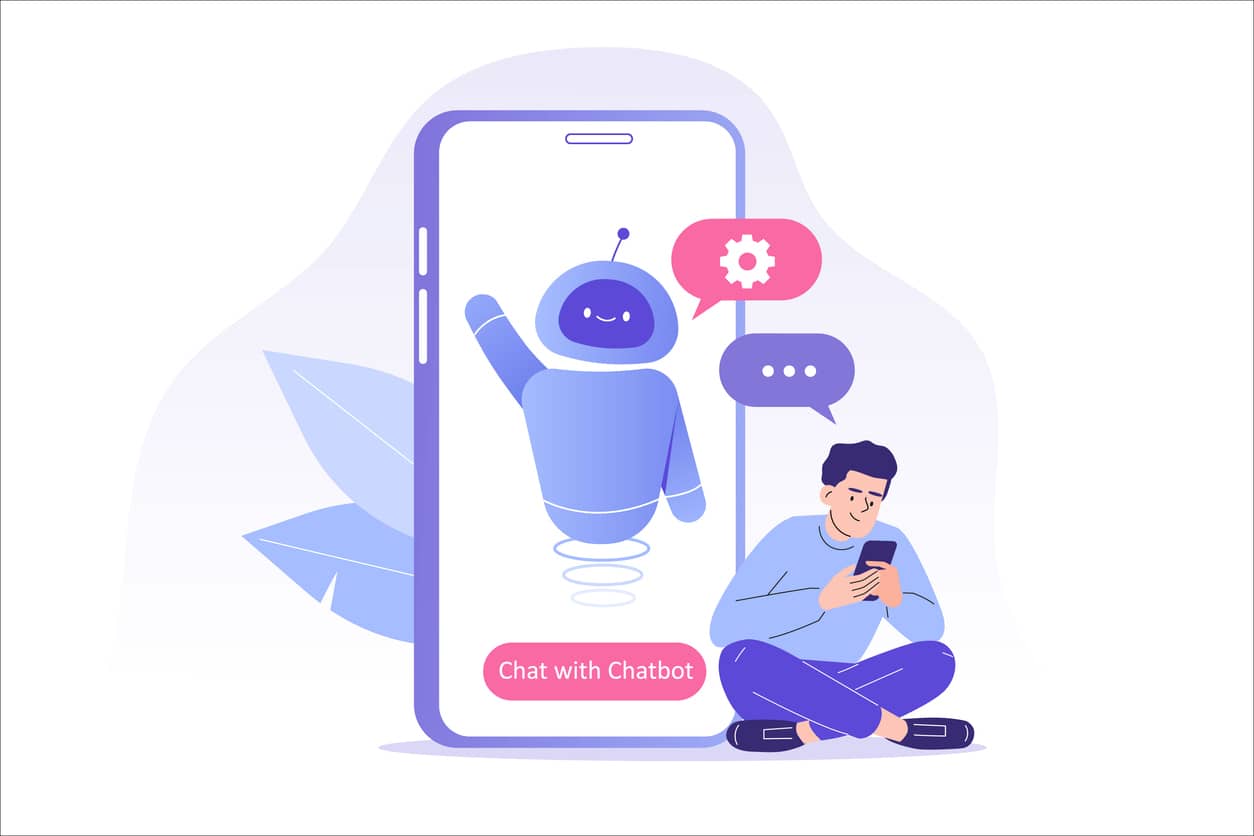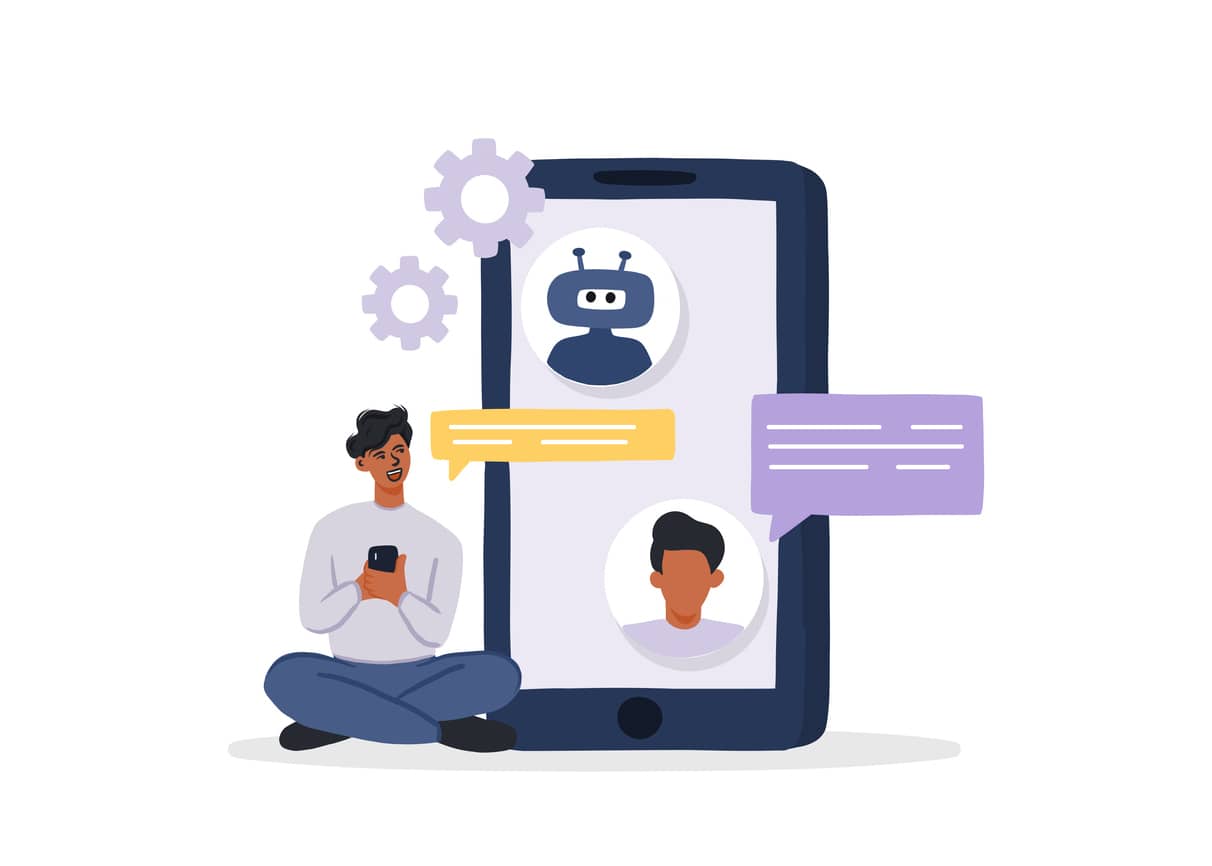Top 3 Successful Chatbot Examples
[Example 1: Sephora Virtual Artist]
One of the best chatbot examples is the Sephora Virtual Artist. This bot enhances the customer experience by allowing users to try on makeup virtually. Utilizing augmented reality (AR), it shows how different products look on the user’s face. Additionally, Sephora’s chatbot provides personalized product recommendations and tutorials, helping customers make informed purchasing decisions.
The Sephora Virtual Artist is an excellent example of how chatbots can blend AI and AR to provide a unique, helpful service. It demonstrates how businesses can use chatbots to improve customer engagement and satisfaction, ultimately driving sales. This bot addresses common customer questions about product suitability, making the shopping experience more interactive and enjoyable. Moreover, it saves time for both customers and staff by reducing the need for in-store trials.
[Example 2: H&M’s Virtual Assistant]
H&M’s Virtual Assistant is another standout example. This chatbot helps users find outfits based on their preferences. It asks questions about style, occasion, and budget to offer tailored recommendations. This bot has significantly improved the shopping experience for H&M’s customers, offering personalized service without human intervention.
The H&M chatbot is an example of how chatbots can offer personalized shopping experiences, saving time for users and increasing sales for the company. By guiding customers through a conversational interface, it can suggest outfits, answer product-related questions, and even help checkout. This makes the shopping journey seamless and efficient, boosting customer satisfaction and loyalty.
[Example 3: Lemonade Insurance’s AI Chatbot, Maya]
Lemonade Insurance’s AI Chatbot, Maya is a great example of how chatbots can streamline customer service. Maya helps users file insurance claims quickly and easily. It guides them through the process, answering questions and collecting necessary information. This chatbot has reduced the time it takes to process claims and improved customer satisfaction.
Lemonade’s Maya illustrates how chatbots can handle complex tasks efficiently, providing excellent customer support and improving operational efficiency. This bot showcases how AI can manage intricate processes like insurance claims, which traditionally require significant human intervention. By automating these tasks, businesses can save time and resources while providing a better service to their customers.

How Do You Know If a Chatbot Model Is a Good Example to Follow?
When evaluating AI assistant examples, consider how they address specific business needs. A good chatbot should improve customer service, save time, and be easy to interact with. See how well it answers questions, responds accurately, and affects customer satisfaction.
See what customers think about a chatbot to determine if it’s effective. Positive reviews and high usage rates indicate that it effectively meets user needs. For instance, companies can follow virtual assistants that consistently receive praise for their efficiency and user-friendliness.
Additionally, check if the bot can handle complex tasks, such as reading attached PDF files for free. This capability can significantly enhance its usefulness in business settings.
For example, a chatbot can read PDFs to find important details. This can save time for customers and workers, make processes more efficient, and boost productivity.

What Makes a Good Chatbot?
A good chatbot is user-friendly, efficient, and provides value to the company and its customers. Here are key attributes:
- Good at conversation: The chatbot should engage users naturally, making interactions feel human-like. Bots that understand and respond to language cues enhance the user experience by making interactions smoother and more intuitive.
- Responsive: It should provide quick, accurate answers to user questions. Chatbots that respond promptly help maintain user engagement and satisfaction. Slow or inaccurate responses can frustrate users and diminish the bot’s perceived value.
- Multi-functional: A versatile chatbot can handle various tasks, from customer service to sales support. For instance, a bot can help suggest products, take orders, and answer questions after a purchase. This saves time by providing all-in-one support without needing many systems or human help.
- Accessible: It should be easy to use on different platforms, including websites and mobile apps. Ensuring the chatbot is accessible across various devices and channels maximizes its reach and usability.
- Personalized: Tailoring responses to individual users enhances the experience and effectiveness. Bots that remember user preferences and past interactions provide a more customized service, fostering customer loyalty and satisfaction.
To create a chatbot, start by defining its purpose and audience. Use AI technologies to develop its conversation abilities and ensure it can integrate with your existing systems. A good chatbot should quickly work with your current digital tools, making things better instead of more complicated.
How do Chatbots work? Chatbots use natural language processing (NLP) to understand user inputs and provide appropriate responses. The best AI chatbots learn from interactions and improve over time. This continuous learning process ensures the chatbot becomes more effective and efficient with each interaction.
Consider the best AI chatbot models and how they leverage advanced technologies to provide superior service. For instance, AI-driven chatbots can analyze user behavior to predict needs and offer proactive assistance. These capabilities make them valuable tools for businesses looking to enhance customer engagement and efficiency.
To see how a chatbot can transform your business, request a demo today and explore the potential of these powerful tools. Chatbots are a significant advancement in how companies communicate with customers. They help with support, sales, and making the user experience better.
In short, a well-designed chatbot can help your business whether you want to create one or learn how it works. Adding a chatbot can benefit your business in various ways.
It can improve customer service and increase efficiency. Additionally, it can help with lead generation and enhance user experience. To create a successful chatbot, focus on making it chatty, responsive, multi-functional, accessible, and personalized. This will help meet your business needs and exceed customer expectations.
In summary, whether you are looking at how to create a chatbot or understanding how do chatbots work, it’s clear that integrating a well-designed chatbot can significantly benefit your business. By following successful chatbot examples and focusing on creating a bot that is conversational, responsive, multi-functional, accessible, and personalized, you can develop a solution that meets your business needs and exceeds customer expectations.




